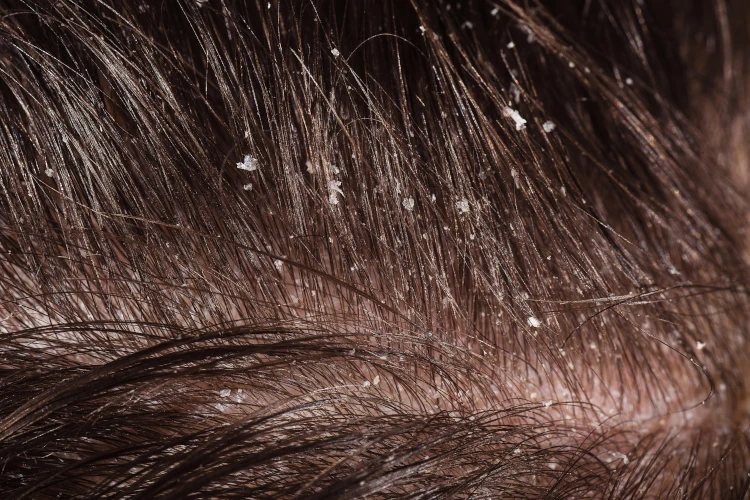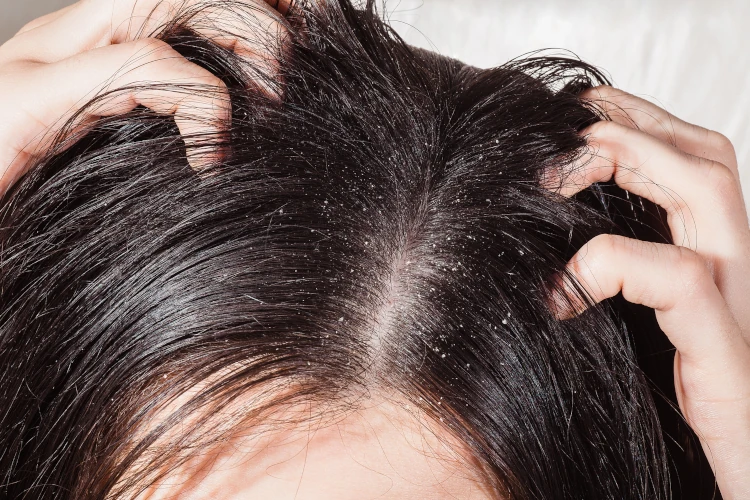
Does Dandruff Cause Hair Loss?
Dandruff and hair loss often show up hand in hand, prompting plenty of questions and some understandable worry. But does one cause the other, or are they just awkward roommates on your scalp?
Let’s get into what really connects dandruff and hair loss, when to be concerned, and what you can do about it if your scalp seems to be staging a rebellion.
Can Dandruff Lead to Hair Loss Over Time?
To understand whether dandruff can lead to hair loss, it helps to know how your hair growth cycle works. Hair naturally grows in phases: anagen (growth), catagen (transition), and telogen (rest). At any given moment, you have strands in all these phases, which is why a little shedding each day is completely normal.
Though occasional flaking won’t throw off this cycle, persistent dandruff can. Especially if it’s linked to conditions like seborrheic dermatitis or fungal infections, dandruff may inflame your scalp. That inflammation can irritate hair follicles and, over time, disrupt the normal growth cycle, potentially leading to thinning.
It’s not just the dandruff on its own, though. Scalp issues often mix with other triggers like stress, hormonal shifts, or genetics. For instance, if you’re navigating menopause or undergoing hormone therapy, imbalances could amplify changes in your hair. That’s why it’s so important to look at the bigger picture when diagnosing the root of the problem.
In some cases, repeated scratching from an itchy scalp can also contribute to breakage or mechanical damage. You may not notice it at first, but over time, aggressive brushing or friction can thin out hair near the front or crown.
It’s a reminder that how you treat your scalp physically matters just as much as the products you use. And though dandruff isn’t always the main culprit, it can tip the scales when combined with other factors already affecting hair health.
How Much Hair Loss Is Normal and When to Worry

It’s easy to panic when you see a clump of hair in the shower drain or on your brush. But here’s the thing: losing around 50 to 100 hair strands a day falls within the healthy range for most adults. However, if your shedding remains steady and you’re not noticing thinner patches or wider parts, dandruff likely isn’t the main cause.
That said, it’s important to pay attention to your body. Sudden shedding spikes or visible thinning, especially around the temples, crown, or part, deserve attention. That’s the time to bring in a dermatologist or trichologist to rule out underlying issues.
Treating Dandruff To Protect Your Hair
If you’re dealing with flaking, itching, and some extra shedding, don’t wait. Dealing with dandruff early is your best bet to keep your hair and scalp healthy. Start with over-the-counter shampoos that contain active ingredients like ketoconazole, selenium sulfide, salicylic acid, or zinc pyrithione. Rotate between a couple if you don’t see immediate results, but don’t abandon ship too quickly. Most treatments take some time to show improvement.
Along with shampoo, consider using a lightweight scalp oil or serum that hydrates without clogging follicles. Keeping your scalp clean and balanced goes a long way toward breaking the inflammation cycle. Even a good hair care routine that avoids harsh heat, sulfates, or alcohol-heavy products can make a noticeable difference.
Ultimately, addressing the root causes of hair loss protects your hair from unnecessary fallout. If patchy thinning persists despite managing dandruff, a specialist can assess whether the condition is non-scarring or scarring in nature and determine if transplantation is appropriate.
What if Hair Doesn’t Grow Back?
Many people explore hair restoration options, especially if hair density hasn’t improved over six to 12 months. Advances in transplant techniques now make it easier, and more natural-looking, than ever to restore lost volume. You can browse real-life before-and-after transplant photos to see what results actually look like. The differences are striking, especially for those with patchy thinning caused by chronic scalp inflammation.
Of course, cost plays a role in making that decision. If you’re considering taking that step, you’ll want to weigh hair transplant costs and what’s included, such as consultations, post-op care, and the number of grafts, so there are no surprises. Some clinics also offer flexible payment plans to make the process more accessible.
Managing Hair Dandruff and Hair Loss Together
It’s important to remember that dandruff doesn’t cause hair loss directly. But it does make a difficult situation worse when left unchecked. Think of your scalp as soil and your hair as the plants growing out of it. If your scalp is inflamed, flaky, or irritated, it’s difficult for hair to grow properly, and even the strongest strands may not be able to thrive.
When dandruff combines with other risk factors, like genetics, age, stress, or hormonal changes, normal shedding can become noticeable hair loss. That’s why it’s smart to treat scalp issues as more than a cosmetic nuisance. You don’t have to figure it out by yourself. If you’ve been trying anti-dandruff treatments for a trial period of four to six weeks with no improvement, talk to a specialist. They can help identify whether it’s seborrheic dermatitis, psoriasis, or something else entirely. And if you’re looking for long-term answers, start with a trusted hair loss clinic offering medical expertise and treatment options.
Dealing with dandruff and hair loss at the same time can feel overwhelming. The frustration builds when you’ve tried multiple products with little success, and your confidence starts to dip during everyday moments, like combing your hair, getting dressed, or even looking in the mirror. But you’re not powerless. With the proper knowledge and persistence, you can figure out what’s happening, soothe your scalp, and protect your hair.


